10g
Showing 401–450 of 817 results
-
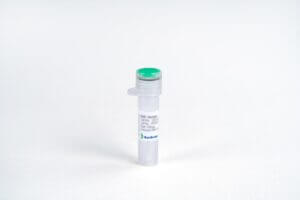
Cathepsin B, His, Human
$142.31 Add to cart View Product DetailsCathepsin B is an enzymatic protein that is a member of the peptidase (or protease) family. Elevated lev- els of cathepsin B occur in a wide variety of disease,causing numerous pathologies including cell death, inflammation, and the production of toxic peptides. For example, neuroscience research suggests that cathepsin B plays a role in inducing epilepsy resulting in a significant amount of cell death. Seizure-induced rats treated with a cathepsin B inhibitor exhibited improved neurological scores and learning ability with reduced neuronal cell death.
-
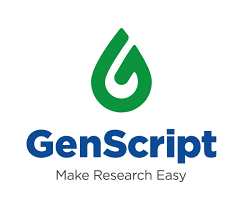
Cathepsin L, Human
$81.94 Add to cart View Product DetailsCathepsin L is an enzyme. Cathepsin L, a lysosomal endopeptidase expressed in most eukaryotic cells, is a member of the papain-like family of cysteine proteinases. Cathepsin L plays a major role in antigen processing, tumor invasion and metastasis, bone resorption, and turnover of intracellular and secreted proteins involved in growth regulation. Unlike the precursor forms of other papain family members, the 43 kDa pro-cathepsin L itself is secreted from various cells. Pro-cathepsin L is the major excreted protein of malignantly transformed mouse fibroblasts and is also one of the major acidic cysteine proteases in mammalian cells.
-
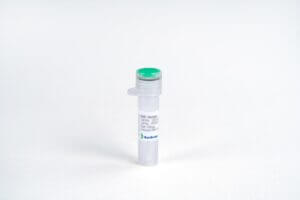
CD160 Fc Chimera, Human
$34.50 Add to cart View Product DetailsCD160 is a glycosylphosphatidylinositol-anchored Ig domain protein that is expressed on almost all intestinal intraepithelial lymphocytes (IELs), γδ T (gamma delta T) cells, NK (natural killer) cells, and a minor subset of CD4+ and CD8+ T cells. In terms of function, work has centered on the role of CD160 in enhancing NK or CD8 T cell activation. Such effects have been attributed to the ability of CD160 to bind classical and nonclassical MHC class I molecules, although with apparent low affinity, requiring clustering of MHC class I molecules or overexpression of CD160 or MHC class I for detection of the interaction.
-

CD25/IL-2Rα Fc Chimera, Human
$103.50 Add to cart View Product DetailsThe IL-2 receptor system consists of three non-covalently linked subunits termed IL-2Rα, IL-2Rβ, and IL-2Rγ. The IL-2Rα is a type I transmembrane protein consisting of a 219 amino acid (a.a.) extracellular domain, a 19 a.a. transmembrane domain and a 13 a.a. intracellular domain, which is not involved in the transduction of IL-2 signal. Activated T cells, regulatory T cells (Tregs) and NK cells express high levels of CD25 and expression of the high-affinity IL-2Rα is mostly limited to these cell populations. Signaling via IL-2Rα mediates multiple biological processes in various cell populations, e.g. proliferation and differentiation of B cells and NK cells. A soluble form of IL-2Rα (IL-2Rα) appears in serum, concomitant with its increased expression on cells. The function of the soluble IL-2Rα is unclear. Increased levels of IL-2Rα in biological fluids reportedly correlate with increased T and B cell activation and immune system activation. Increased serum concentration of IL-2Rα has been observed in patients with a variety of inflammatory conditions and in the course of some leukemias and lymphomas.
-

CD40L/CD154/TRAP, Human
$64.69 Add to cart View Product DetailsCD40 Ligand (CD40L/CD154/TRAP) is a membrane glycoprotein and differentiation antigen expressed on the surface of T-cells. The CD40 ligand stimulates B-cell proliferation and secretion of all immunoglobulin isotypes in the presence of cytokines. It also costimulates proliferation of activated T-cell and this is accompanied by the production of IFN-γ, TNF-α, and IL2. CD40 ligand has been shown to induce cytokine production and tumoricidal activity in peripheral blood monocytes.
-

CHAPSO
$539.13 Add to cart View Product DetailsCHAPSO
-

Chloroform-d, 99.6atom PercentD (stabilized with Silver chip)
$32.81 Add to cart View Product DetailsChloroform-d, 99.6atom PercentD (stabilized with Silver chip)
-

Cholesteryl Palmitate
$629.95 Add to cart View Product DetailsCholesteryl Palmitate
-

cis-4-Aminocyclohexanol Hydrochloride
$1,155.75 Add to cart View Product DetailsMolecular Formula : C6 H13 N O . Cl H
-

CLDN18.2, His, Human
$189.75 Add to cart View Product DetailsClaudin-18 is a protein that in humans is encoded by the CLDN18 gene. CLDN18 belongs to the large claudin family of proteins, which form tight junction strands in epithelial cells. The Expression of Isoform A2 (CLDN18.2) is restricted to the stomach mucosa where it is predominantly observed in the epithelial cells of the pit region and the base of the gastric glands including exocrine and endocrine cells (at protein level). CLDN18.2 is founded to be abundant in gastric tumors, Experimental antibody IMAB362 targets Claudin 18.2 to help treat gastric cancers.
-

CNTF, Human
$63.83 Add to cart View Product DetailsCiliary Neurotrophic Factor (CNTF) is a cytokine belonging to the Interleukin 6 (IL-6) family, which also includes IL-6, Oncostatin M, Leukemia Inhibitory Factor (LIF), and Cardiotrophin-1. Structurally, CNTF resembles a four-helix bundle composition, similar to the other members of the IL-6 family. The receptor for CNTF is composed of three parts: a gp130-like subunit common in the IL-6 receptor family, a LIF Receptor β subunit, and a CNTF specific α receptor subunit. Upon binding to the CNTF, the β subunit of the CNTF receptor will undergo tyrosine phosphorylation, and activate the intracellular JAK/STAT pathway. The main function of CNTF in vivo is to promote the differentiation and survival of a variety of neurons and glial cells, including sympathetic precursor cells and spinal motor neurons.
-

CNTF, Mouse
$90.56 Add to cart View Product DetailsCiliary neurotrophic factor (CNTF) is a polypeptide hormone whose actions appear to be restricted to the nervous system where it promotes neurotransmitter synthesis and neurite outgrowth in certain neuronal populations. CNTF was initially identified as a trophic factor for embryonic chick ciliary parasympathetic neurons in culture. Furthermore, the protein is also a potent survival factor for neurons and oligodendrocytes and may be relevant in reducing tissue destruction during inflammatory attacks. In addition, CNTF is useful for treatment of motor neuron disease and it could reduce food intake without causing hunger or stress. Recombinant murine CNTF containing 198 amino acids and it shares 82 % and 95 % a.a. sequence identity with human and rat CNTF.
-

CNTF, Rat
$63.83 Add to cart View Product DetailsCiliary Neurotrophic Factor (CNTF) is a polypeptide hormone which acts within the nervous system where it promotes neurotransmitter synthesis and neurite outgrowth in certain neuronal populations. CNTF is a potent survival factor for neurons and oligodendrocytes and may play a role in reducing tissue damage during increased inflammation. A mutation in this gene, which results in aberrant splicing, leads to ciliary neurotrophic factor deficiency, however this phenotype is not causally related to neurologic disease.
-

Congo Red
$92.67 Add to cart View Product DetailsCongo Red
-

Creatinine
$81.62 Add to cart View Product DetailsCreatinine
-

Cresol Red, Water Soluble
$76.92 Add to cart View Product DetailsCresol Red, Water Soluble
-

Croton Oil
$132.25 Add to cart View Product DetailsCroton Oil
-

Curcumin
$105.42 Add to cart View Product DetailsCurcumin
-

Cyclooctanone
$22.71 Add to cart View Product DetailsCyclooctanone
-

D-(+)-Melibiose, Monohydrate
$131.24 Add to cart View Product DetailsD-(+)-Melibiose, Monohydrate
-

D-Alanine Methyl Ester Hydrochloride
$120.75 Add to cart View Product DetailsMolecular Formula : C4H10ClNO2
-

D-Arabinitol
$401.93 Add to cart View Product DetailsMolecular Formula : C5 H12 O5
-

D-Arginine
$163.01 Add to cart View Product DetailsMolecular Formula : C6 H14 N4 O2
-

D-Asparagine
$140.59 Add to cart View Product DetailsMolecular Formula : C4 H8 N2 O3
-

D-Biotin
$219.73 Add to cart View Product DetailsD-Biotin
-

D-Ornithine Hydrochloride
$557.03 Add to cart View Product DetailsD-Ornithine Hydrochloride
-

D,L-Azatryptophan Hydrate
$1,296.34 Add to cart View Product DetailsMolecular Formula : C10H13N3O3
-

Dextromethorphan Hydrobromide, Monohydrate, USP
$251.95 Add to cart View Product DetailsDextromethorphan Hydrobromide, Monohydrate, USP
-

Diacetin (Mixture)
$82.80 Add to cart View Product DetailsMolecular Formula : C7H12O5
-

Dimethyl Sulfoxide-d6, 99.9 Atom Percent D
$121.41 Add to cart View Product DetailsDimethyl Sulfoxide-d6, 99.9 Atom Percent D
-

Dimethyl Sulfoxide-d6, 99.9 Atom Percent D, Contains 0.05 Percent TMS
$125.36 Add to cart View Product DetailsDimethyl Sulfoxide-d6, 99.9 Atom Percent D, Contains 0.05 Percent TMS
-

Diphenylcarbazone Compound with s-Diphenylcarbazide, Reagent, ACS
$299.70 Add to cart View Product DetailsDiphenylcarbazone Compound with s-Diphenylcarbazide, Reagent, ACS
-

Dithizone, Reagent, ACS
$169.15 Add to cart View Product DetailsDithizone, Reagent, ACS
-

Dithranol, BP
$261.58 Add to cart View Product DetailsDithranol, BP
-

DKK-1, Human
$47.44 Add to cart View Product DetailsDickkopf related protein 1 (DKK-1) is a chemokine that belongs to the DKK protein family, which also includes DKK-2, DKK-3 and DKK-4. DKK-1 was originally identified as a Xenopus head forming molecule that behaves as an antagonist for Wnt signaling. It is one of the most up-regulated genes during androgen-potentiated balding, with DKK-1 messenger RNA up-regulated a few hours after DHT treatment of hair follicles at the dermal papilla in vitro. Neutralizing bodies against DKK-1 reverses DHT effects on outer root sheath keratinocytes. DKK-1 expression is attenuated by L-threonate, a metabolite of ascorbate in vitro. DKK-1 promotes LRP6 internalization and degradation as it forms a ternary complex with the cell surface receptor Kremen. DKK-1 not only functions as a head inducer during development, but also regulates joint remodeling and bone formation, which indicate sits role in the pathogenesis of rheumatoid arthritis and multiple myeloma.
-

DKK-1, Mouse
$90.56 Add to cart View Product DetailsDickkopf related protein 1 (DKK-1) is a chemokine that belongs to the DKK protein family, which also includes DKK-2, DKK-3 and DKK-4. DKK-1 was originally identified as a Xenopus head forming molecule that behaves as an antagonist for Wnt signaling. It is one of the most up-regulated genes during androgen-potentiated balding, with DKK-1 messenger RNA up-regulated a few hours after DHT treatment of hair follicles at the dermal papilla in vitro. Neutralizing bodies against DKK-1 reverses DHT effects on outer root sheath keratinocytes. DKK-1 expression is attenuated by L-threonate, a metabolite of ascorbate in vitro. DKK-1 promotes LRP6 internalization and degradation as it forms a ternary complex with the cell surface receptor Kremen. DKK-1 not only functions in head formation during development, but also regulates joint remodeling and bone formation indicating its potential role in the pathogenesis of rheumatoid arthritis and multiple myeloma.
-

DL-2-Aminobutyric Acid Methyl Ester Hydrochloride
$341.55 Add to cart View Product DetailsMolecular Formula : C5H12ClNO2
-

DL-Alanine
$128.51 Add to cart View Product DetailsMolecular Formula : C3 H7 N O2
-

DL-Asparagine Monohydrate
$144.04 Add to cart View Product DetailsMolecular Formula : C4 H8 N2 O3 . H2 O
-

DNAM-1/CD226 Fc Chimera, Human
$34.50 Add to cart View Product DetailsDNAM-1 (DNAX accessory molecule-1), also known as CD226, platelet and T cell activation antigen 1 (PTA1) and TLiSA1, is a member of the Ig superfamily containing two Ig-like domains of the V set and is encoded by a gene on human chromosome 18q22.3. DNAM-1 is an activating receptor expressed on natural killer (NK) cells, CD8+ T cells, and other immune cells. Upon recognition of its ligands, CD155 and CD112, DNAM-1 promotes NK cell–mediated elimination of transformed and virus-infected cells. It also has a key role in expansion and maintenance of virus-specific memory NK cells. DNAM-1 is the cell surface receptor of NECTIN2. Upon ligand binding, it stimulates T cell proliferation and cytokine production, including that of IL2, IL5, IL10, IL13 and IFNG.
-

DNAM-1/CD226, His, Human
$34.50 Add to cart View Product DetailsCD226 (Cluster of Differentiation 226), also known as PTA1 (outdated term, ‘platelet and T cell activation antigen 1’)[5] or DNAM-1 (DNAX Accessory Molecule-1), is a ~65 kDa glycoprotein expressed on the surface of natural killer cells, platelets, monocytes and a subset of T cells. It is a member of the immunoglobulin superfamily. This protein is involved in intercellular adhesion, lymphocyte signaling, cytotoxicity and lymphokine secretion mediated by cytotoxic T-lymphocyte (CTL) and NK cell. It is the cell surface receptor for NECTIN2 and its main ligands are CD112 and CD155. It stimulates T-cell proliferation and cytokine production, including that of IL-2, IL-5, IL-10, IL-13, and IFNγ upon ligand binding.
-

Doxycycline Hydrochloride
$513.23 Add to cart View Product DetailsDoxycycline Hydrochloride
-

Ectoine
$1,014.60 Add to cart View Product DetailsEctoine
-

EGF Fc Chimera, Human
$43.13 Add to cart View Product DetailsEpidermal Growth Factor (EGF) is a potent growth factor that stimulates the proliferation of various epidermal and epithelial cells. Additionally, EGF has been shown to inhibit gastric secretion, and to be involved in wound healing. EGF signals through the EGF receptor (EGFR) also known as erbB1, is a class I tyrosine kinase receptor. This receptor also binds with TGF-α and VGF (vaccinia virus growth factor). EGF-receptor binding results in cellular proliferation, differentiation, and survival. EGF is a low-molecular-weight polypeptide first purified from the mouse submandibular gland, but since then found in many human tissues including submandibular gland, parotid gland. Salivary EGF, which seems also regulated by dietary inorganic iodine, also plays an important physiological role in the maintenance of oro-esophageal and gastric tissue integrity. The biological effects of salivary EGF include healing of oral and gastroesophageal ulcers, inhibition of gastric acid secretion, stimulation of DNA synthesis as well as mucosal protection from intraluminal injurious factors such as gastric acid, bile acids, pepsin, and trypsin and to physical, chemical and bacterial agents.
-

EGF R, His, Human
$86.25 Add to cart View Product DetailsEGF Receptor, also known as ERBB, ERBB1 and HER1, is a type I transmembrane protein belonging to the tyrosine protein kinase family. It belongs to a family of tyrosine kinase receptors including Human EGF Receptors (HER) 2, 3, and 4 which all play important roles in cell growth and differentiation. Their primary ligands are EGF, Heparin-Binding EGF and Transforming Growth Factor α. Upon ligand binding, EGFR undergoes asymmetric dimerization, composed of an “activator” and a “receiver”. EGFR and its family members are disregulated in numerous cancers. In particular, EGFR is overexpressed in many epithelial solid tumors. Evidence suggests EGFR is an excellent target for pharmacologic intervention in Non Small Cell Lung Cancer (NSCLC) due to its high level of expression and prominent role in tumor growth and metastasis.
-
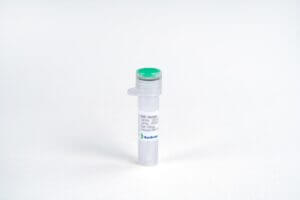
EGF, His, Human
$29.33 Add to cart View Product DetailsEpidermal Growth Factor (EGF) is a potent growth factor that stimulates the proliferation of various epidermal and epithelial cells. Additionally, EGF has been shown to inhibit gastric secretion, and to be involved in wound healing. EGF signals through the EGF receptor (EGFR) also known as erbB1, is a class I tyrosine kinase receptor. This receptor also binds with TGF-α and VGF (vaccinia virus growth factor). EGF-receptor binding results in cellular proliferation, differentiation, and survival. EGF is a low-molecular-weight polypeptide first purified from the mouse submandibular gland, but since then found in many human tissues including submandibular gland, parotid gland. Salivary EGF, which seems also regulated by dietary inorganic iodine, also plays an important physiological role in the maintenance of oro-esophageal and gastric tissue integrity. The biological effects of salivary EGF include healing of oral and gastroesophageal ulcers, inhibition of gastric acid secretion, stimulation of DNA synthesis as well as mucosal protection from intraluminal injurious factors such as gastric acid, bile acids, pepsin, and trypsin and to physical, chemical and bacterial agents.
-
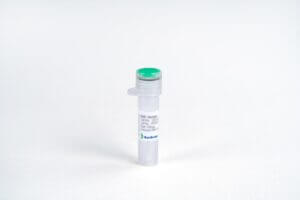
EGF, Human
$34.50 Add to cart View Product DetailsEpidermal Growth Factor (EGF) is a potent growth factor that stimulates the proliferation of various epidermal and epithelial cells. Additionally, EGF has been shown to inhibit gastric secretion, and to be involved in wound healing. EGF signals through the EGF receptor (EGFR) also known as erbB1, is a class I tyrosine kinase receptor. This receptor also binds with TGF-α and VGF (vaccinia virus growth factor). EGF-receptor binding results in cellular proliferation, differentiation, and survival. EGF is a low-molecular-weight polypeptide first purified from the mouse submandibular gland, but since then found in many human tissues including submandibular gland, parotid gland. Salivary EGF, which seems also regulated by dietary inorganic iodine, also plays an important physiological role in the maintenance of oro-esophageal and gastric tissue integrity. The biological effects of salivary EGF include healing of oral and gastroesophageal ulcers, inhibition of gastric acid secretion, stimulation of DNA synthesis as well as mucosal protection from intraluminal injurious factors such as gastric acid, bile acids, pepsin, and trypsin and to physical, chemical and bacterial agents.
-

EGF, Mouse
$34.50 Add to cart View Product DetailsEpidermal Growth Factor (EGF) is a potent growth factor that stimulates the proliferation of various epidermal and epithelial cells. Additionally, EGF has been shown to inhibit gastric secretion, and to be involved in wound healing. EGF signals through the EGF receptor (EGFR) also known as erbB1, is a class I tyrosine kinase receptor. This receptor also binds with TGF-α and VGF (vaccinia virus growth factor). EGF-receptor binding results in cellular proliferation, differentiation, and survival. EGF is a low-molecular-weight polypeptide first purified from the mouse submandibular gland, but since then found in many human tissues including submandibular gland, parotid gland. Salivary EGF, which seems also regulated by dietary inorganic iodine, also plays an important physiological role in the maintenance of oro-esophageal and gastric tissue integrity. The biological effects of salivary EGF include healing of oral and gastroesophageal ulcers, inhibition of gastric acid secretion, stimulation of DNA synthesis as well as mucosal protection from intraluminal injurious factors such as gastric acid, bile acids, pepsin, and trypsin and to physical, chemical and bacterial agents.
-

EGF, Rat (CHO-expressed)
$36.23 Add to cart View Product DetailsEpidermal Growth Factor (EGF) is a potent growth factor that stimulates the proliferation of various epidermal and epithelial cells. Additionally, EGF has been shown to inhibit gastric secretion, and to be involved in wound healing. EGF signals through the EGF receptor (EGFR) also known as erbB1, is a class I tyrosine kinase receptor. This receptor also binds with TGF-α and VGF (vaccinia virus growth factor). EGF-receptor binding results in cellular proliferation, differentiation, and survival. EGF is a low-molecular-weight polypeptide first purified from the mouse submandibular gland, but since then found in many human tissues including submandibular gland, parotid gland. Salivary EGF, which seems also regulated by dietary inorganic iodine, also plays an important physiological role in the maintenance of oro-esophageal and gastric tissue integrity. The biological effects of salivary EGF include healing of oral and gastroesophageal ulcers, inhibition of gastric acid secretion, stimulation of DNA synthesis as well as mucosal protection from intraluminal injurious factors such as gastric acid, bile acids, pepsin, and trypsin and to physical, chemical and bacterial agents.
-
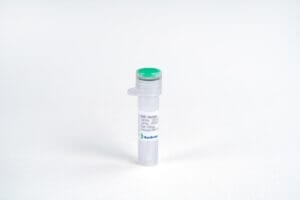
Enterokinase (EK), His, Lyophilized, Bovine
$63.83 Add to cart View Product DetailsEnterokinase (EK) is an enzyme produced by cells of the duodenum and involved in human digestion. It plays a role of turning trypsinogen to its active form trypsin, and indirectly activates the pancreatic digestive enzymes. Enterokinase is a specific protease that cleaves after a lysine preceded by four aspartic acids: Asp-Asp-Asp-Asp-Lys(DDDDK↑). Enterokinase will not work if the recognition site is followed by a proline. rbEKhas the highest activity than EK of other species and is used wildly in biochemical applications. rbEK with 6 × His-tag binds with Ni2+ affinity chromatography and was designed for removing from digestion system.
Recombinant Bovine Enterokinase (His-tagged) (rbEK) as the light chain is a single glycosylated polypeptide chain containing 200 amino acids, 6 × His at C-terminus. A fully biologically active molecule, rbEK has a molecular mass of 40 kDa and is obtained by proprietary chromatographic techniques at GenScript.






